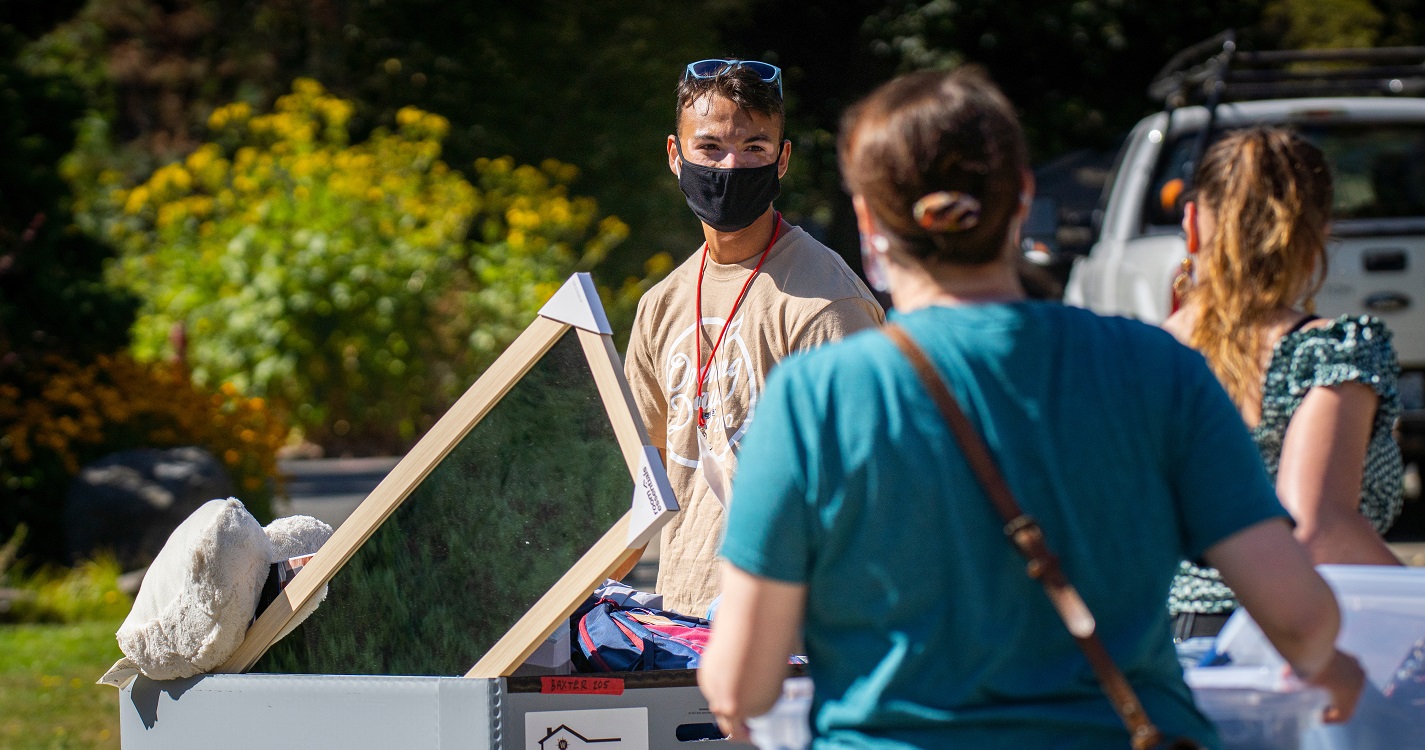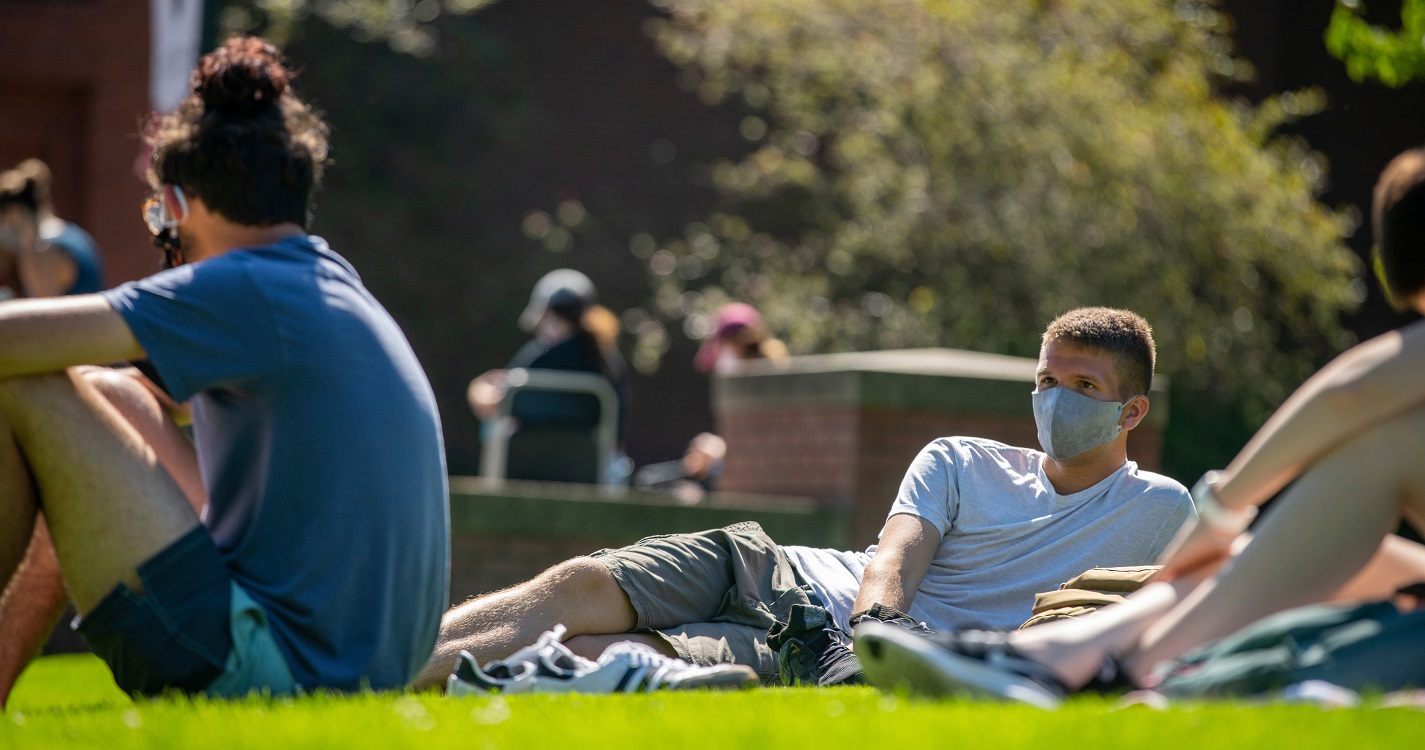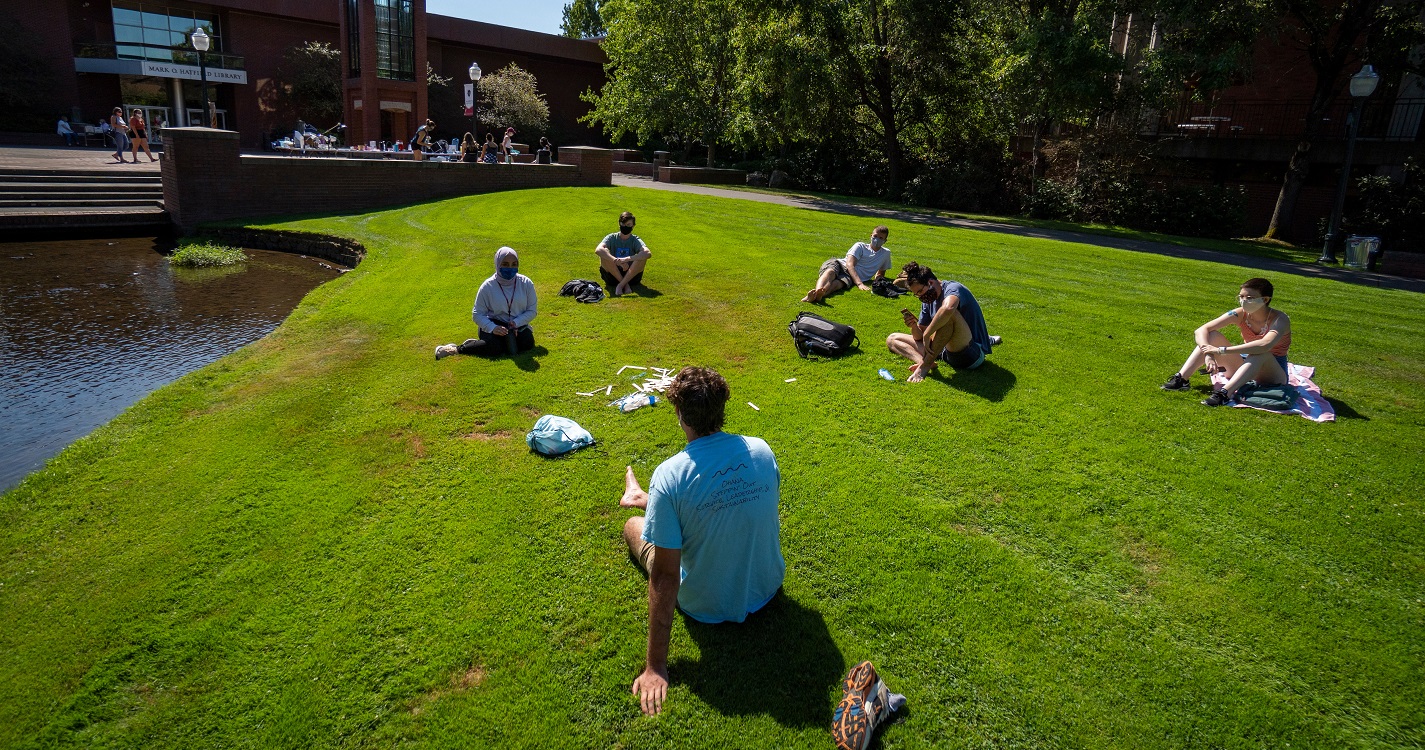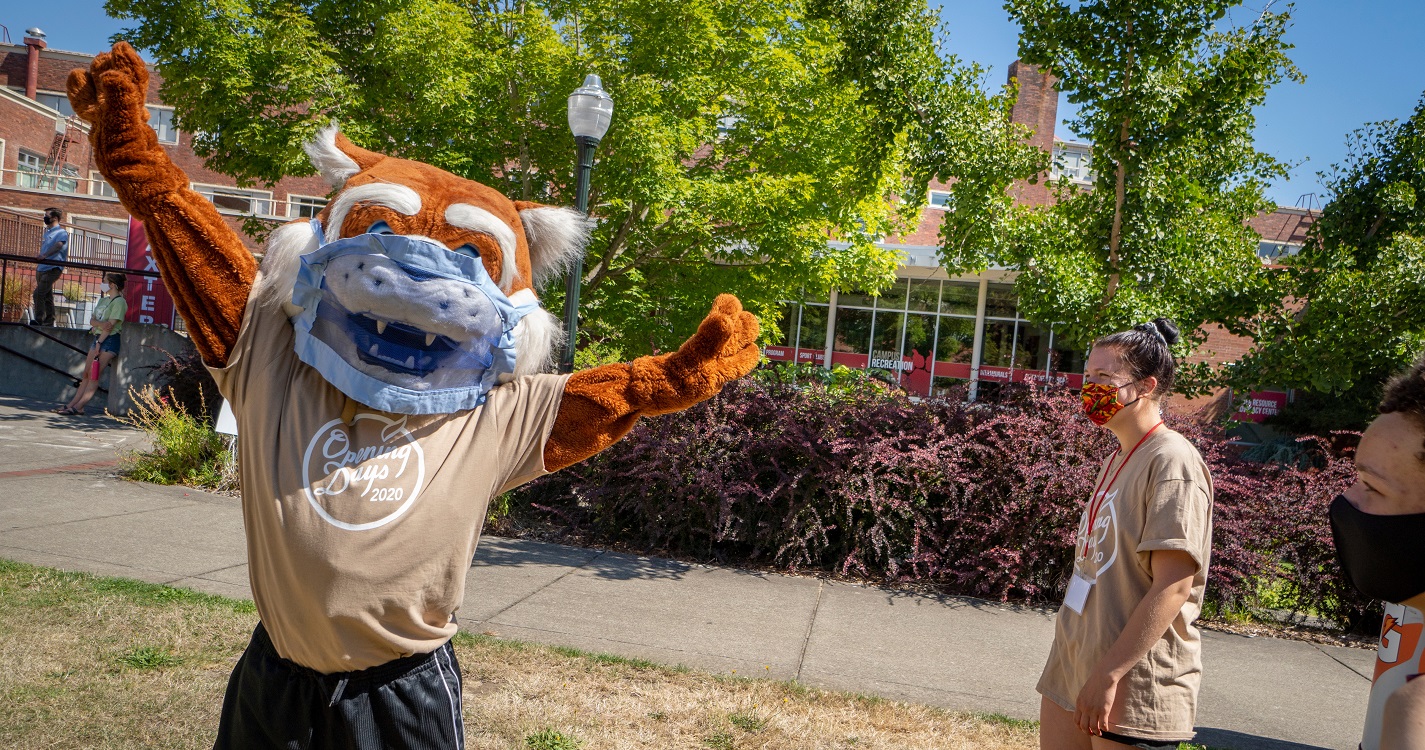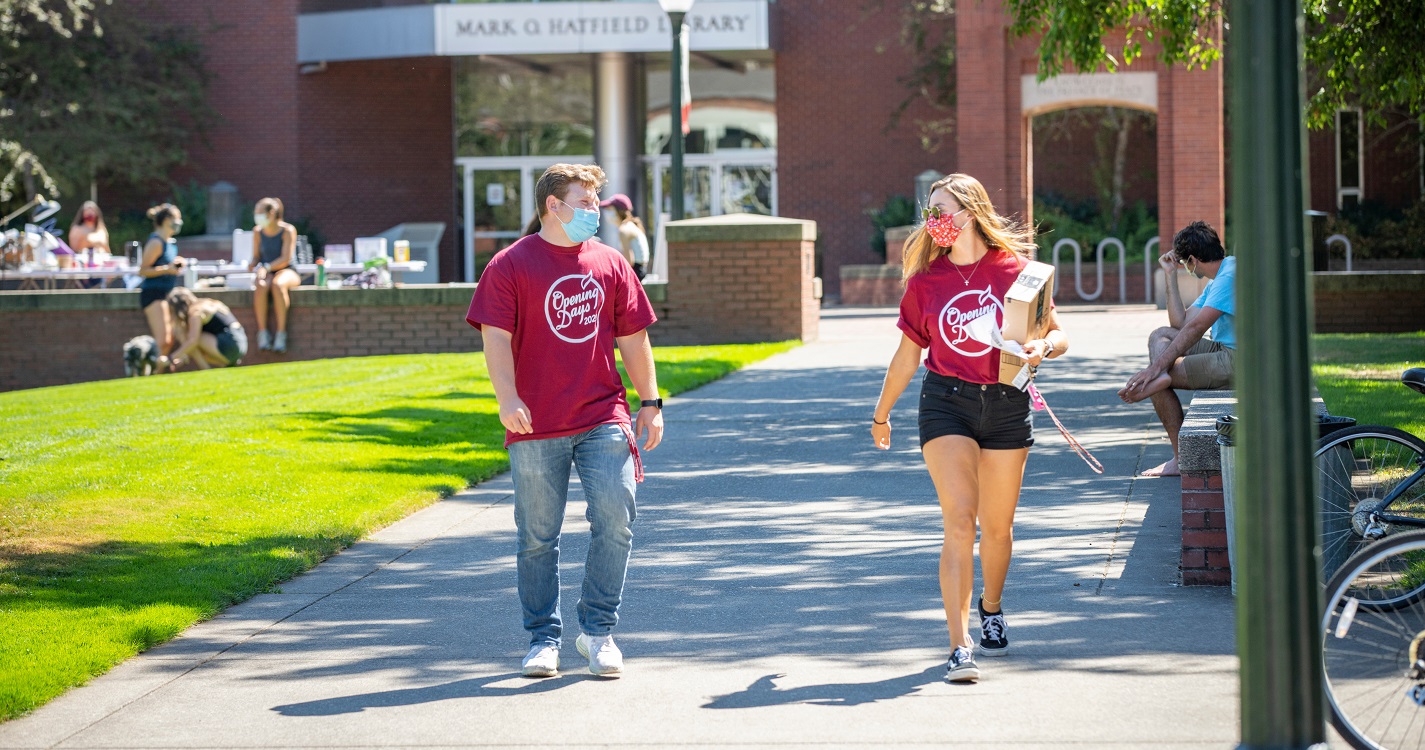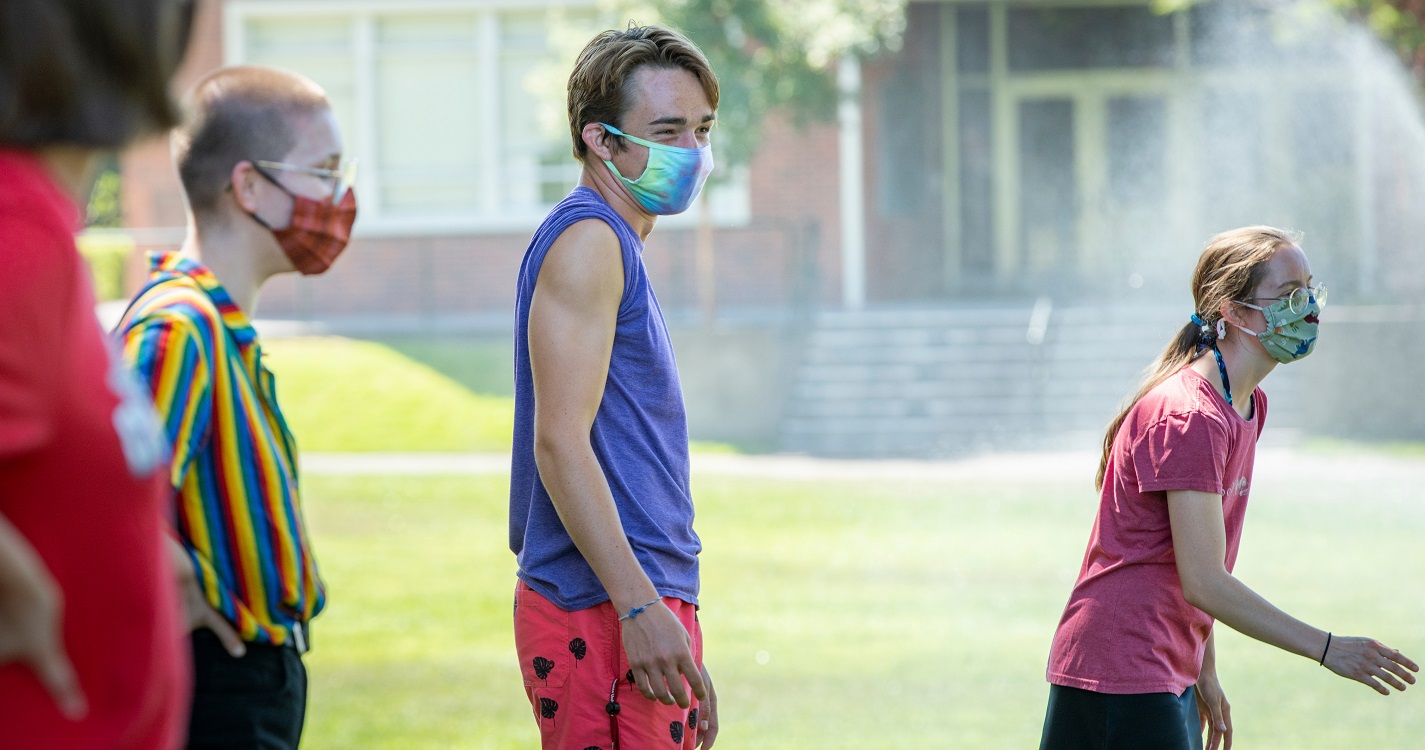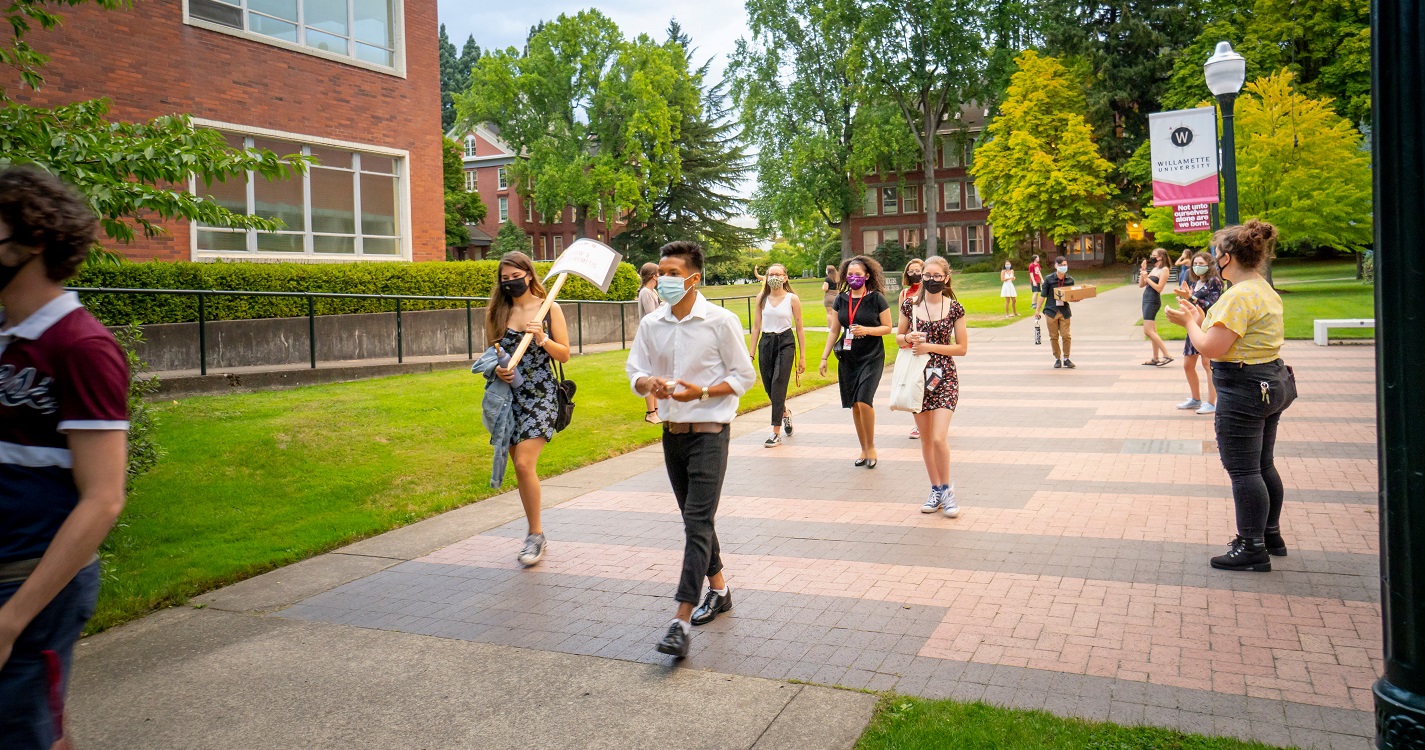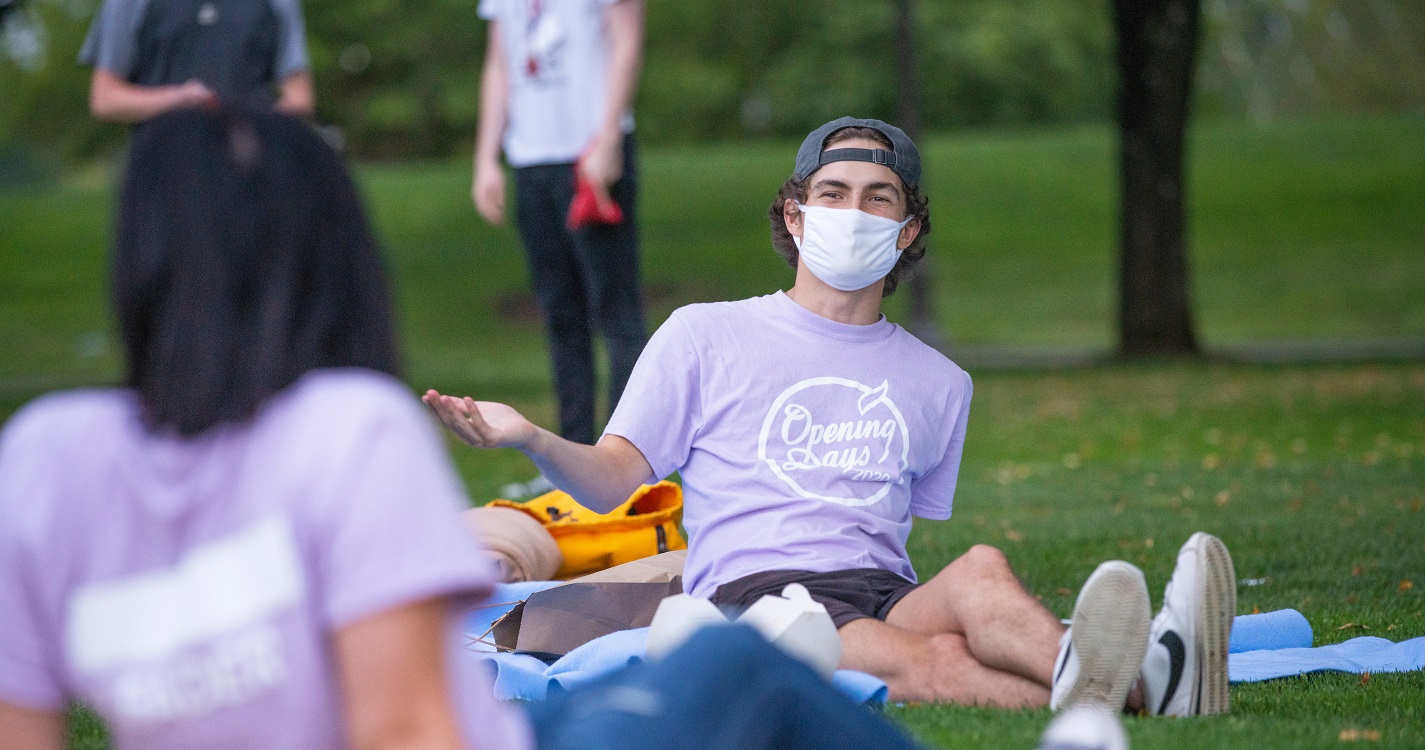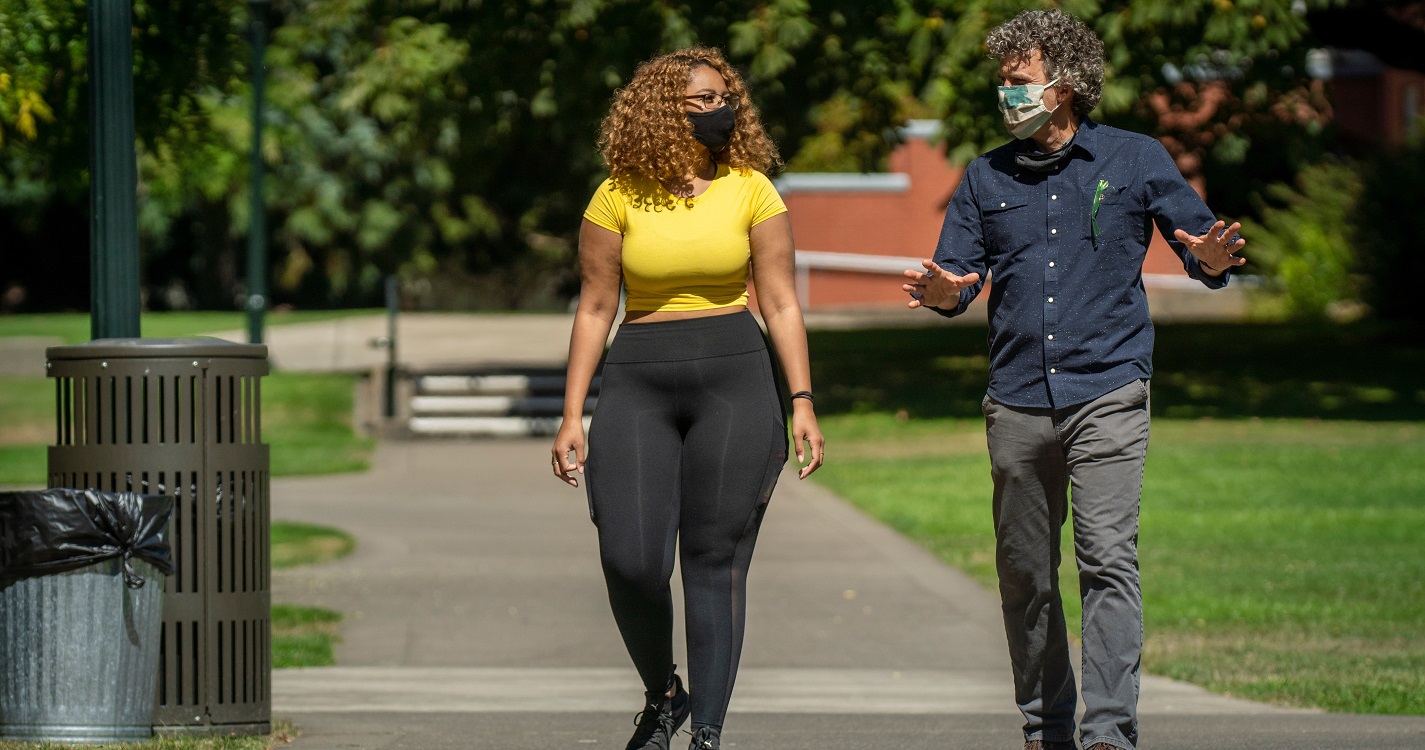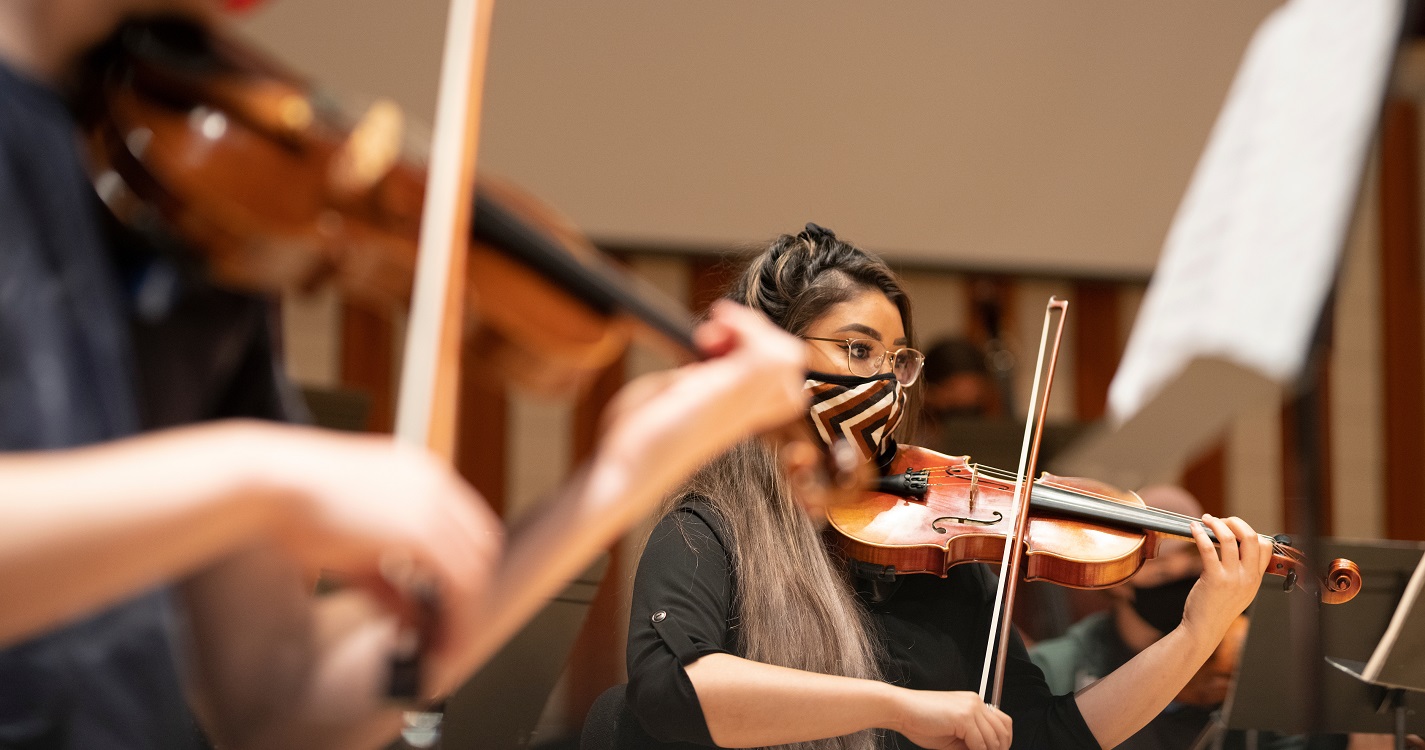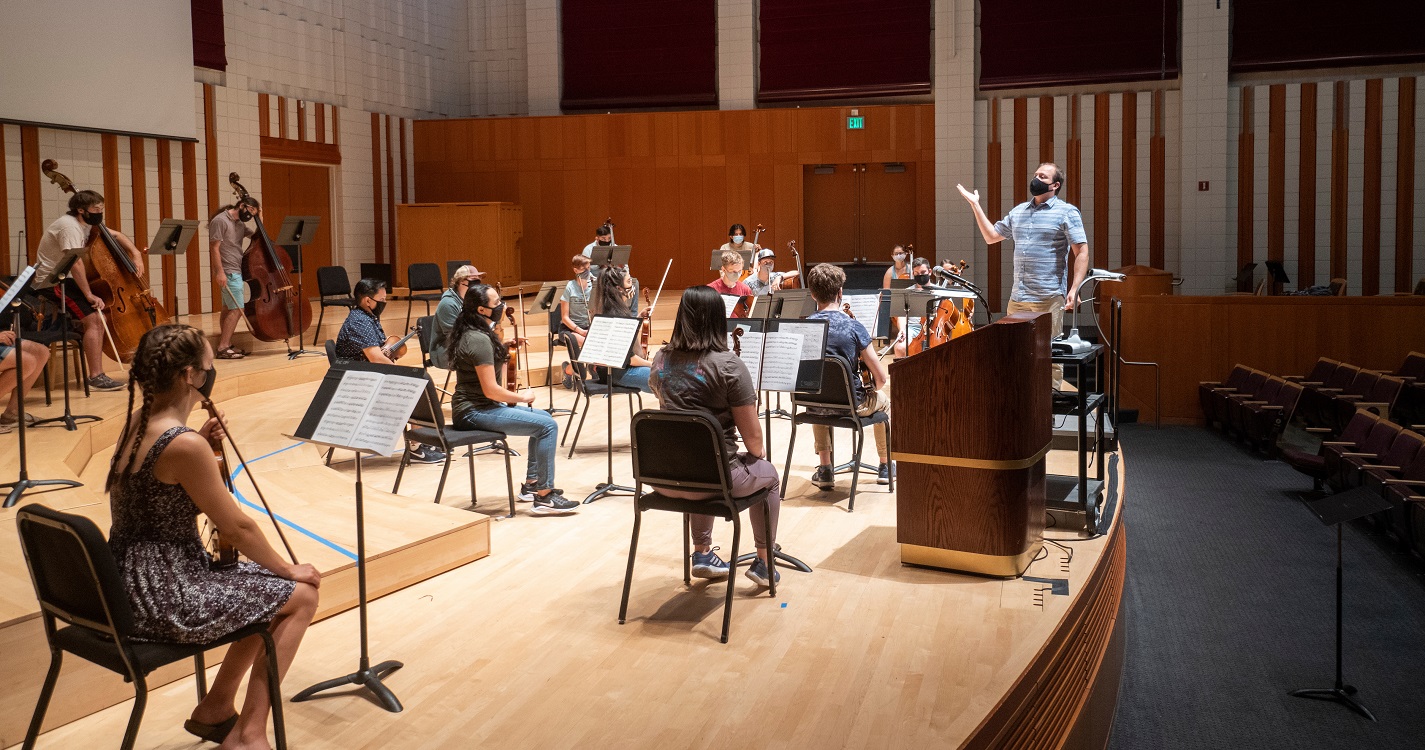After spending most of the spring studying and attending classes remotely in the wake of the global outbreak of COVID-19, Willamette students returned to campus for in-person learning on Monday, Aug. 24. For many, the normal mix of anxiety and excitement at the start of an academic year was amplified as students began to adjust to school life during a pandemic.
“The biggest difference I have noticed is the ambiance of campus,” says Adriana Escorcia-Lopez ’22. “There is more caution overall from students and professors as well.”
Still, on campus, many of the sights and sounds are the same as they would be at the start of any other school year. At midday, the Quad’s sidewalks are bustling with students, only they are wearing facemasks. Other students pick their favorite spot to relax in the sun by the Mill Stream, only they occupy designated circles marked in white athletic field paint to remain six feet apart. Campus’ vibrancy is still on display, but Willamette’s new social-distancing protocols are too.
“I have seen students adapting relatively well,” says Associated Students of Willamette University (ASWU) President Claire Mathews-Lingen ’21. “Campus is definitely quieter, but it doesn’t feel negative or downtrodden. I’ve still seen people excitedly greeting each other, and it has been great to see so many friendly faces again, even behind masks.”
Following new campus protocols
Some of the new measures are commonplace at nearly every organization or business in the state, in accordance with guidelines from the Oregon Health Authority (OHA) and the Center for Disease Control (CDC). Face coverings are now required on campus, social distancing is emphasized in public spaces by markers on the floor inside of buildings, class sizes have been reduced and classrooms have been modified to accommodate these rules. But the new protocols can only be effective at preventing the spread of the virus if they are strictly followed.
“I really hope students are conscious throughout the entire semester and are aware that if we want to keep our campus open, we have to work for it,” says Escorcia-Lopez ’22. “We cannot drop the ball at any point.”
As some students talked about instances of fellow students being lax with the new campus rules, Head Football Coach Isaac Parker ’02, MAT’05 is instilling in his players that working at following the new protocols is more important than being perfect.
"The most difficult thing right now is encouraging our students to keep fighting to follow protocols,” Parker says. “We are asked to live our lives in a completely different way than we ever have, and hold one another accountable 100 percent of the time. But that is impossible. We can’t say, 'these people care and these others don’t,' because at some point, everyone breaks the protocol. We need to treat every infraction as a learning opportunity, and hope that as a community, we can keep building a safer environment to thrive in.”
As a resident advisor (RA) in Southwood Hall, Taylor Gruber ’22 has seen and documented violations of new policies, but also reports that a majority of students are doing their best to adhere to those policies, with the safety of the entire campus community in mind.
“People seem to be taking COVID seriously and are doing their best to hold each other accountable, and I really want this to continue even as the weeks go by,” says Gruber. “I have noticed that for every person who makes a mistake or intentionally violates a policy, there is someone going above and beyond, and that gives me hope.”
Some students expected more difficulties following social-distancing protocols inside of the classroom, but Mathews-Lingen ’21 says she hasn’t seen many issues studying in person so far, adding, “I have honestly been surprised by how safe I feel in classrooms. I am someone who takes this pandemic very seriously and have a lot of my own anxiety about the virus, but classroom space has felt safe and engaging, and my two courses in person are well spaced out and everyone keeps their masks on.”
First experiences with hybrid learning
In June, Willamette was awarded a NEH CARES grant that helped fund hybrid classrooms, which have proven to be an important feature in Willamette’s reopening plan. These classrooms boast technology that allows students who choose to study remotely the opportunity to actively participate in live classes, while still enabling social distancing for those in the physical space on campus. One of the new additions to undergraduate classrooms is the Elmo document camera, which can display a whiteboard, the classroom or a document or object placed beneath it.
While Provost and Senior Vice President Carol Long listed the new technology equipment as one of the early successes of reopening, she also acknowledged the incredible institutional challenge of implementing them into classrooms so quickly, noting that “the enhancement of technological supports has taken the attention and support of everyone during these first weeks.”
For students, the hybrid classes have presented some challenges, especially as everyone, including faculty, gets used to using the new technology.
“The hybrid classrooms have definitely had a learning curve,” says Mathews-Lingen ’21. “Many students have shared with me that their first week and even parts of their second week involved taking time to work out technology kinks and figure out a flow in these new classroom settings. It is definitely a huge adjustment for faculty, so I think we are all just trying to be patient.”
“A lot of professors have been struggling with technological and Zoom-related issues,” says Noah Dantes ’22. “I don’t blame them though — they’re trying their best to provide us all with the best learning experience possible.”
Even with the learning curve, students like Escorcia-Lopez ’22 — who has been taking one of her remote classes in the Hatfield Library — noted that for many students, having the option to study remotely from any location opens up opportunities for those who don’t have the resources or a home environment conducive to learning.
“Something that made me a bit hopeful was that they (Willamette) made changes to the guidelines for living on campus and still participating remotely in class. That was a big concern for a lot of students since not everybody has the same accommodations to create a remote learning environment in their homes,” she says.
Valuing in-person learning and community
With the understanding that campus would operate a little differently and with options to study remotely, the majority of students still opted for in-person instruction.
“Though the summer was filled with endless planning and some high levels of anxiety, once the semester began, the excitement of having students on campus again and the focus of practical work in the classrooms engaged everyone anew,” says Long.
That planning — which began right after Willamette concluded its 2019–20 school year in May — included forming a reopening committee that thoroughly reviewed and considered every conceivable detail and scenario while working hand-in-hand with local and state health agencies to form its new policies.
And while that plan has faced some criticism from students and alumni alike, students and faculty have expressed and emphasized the invaluableness of in-person education and the human need for connection and community as the main reasons they’ve decided to return to campus.
“Being in a physical space used exclusively for learning really helps me get in the mindset,” says Dantes ’22. “When I’m at home in my room trying to focus, in the same place where I sleep and watch Netflix, it’s infinitely harder to learn.”
“I came back to campus in person because I wanted to see my community again,” says Oakley Phoenix ’23. “I felt incredibly safe and supported when I came out to my friends and professors as transmasculine nonbinary last November. The small, Bay Area town where I'm from didn't make me feel this way. As a queer, gender-nonconforming person of color, I've found a place for my most authentic self at Willamette, and I knew that another semester of remote learning wouldn't support my needs.”
Facing so many new obstacles, not just in school, but in daily life, Professor David Craig expressed admiration for his students.
“Students on campus clearly want to be here as measured by their vigilance and engagement with the dreadful barriers we need to include in our in-person teaching and living situation,” Craig says. “The striving and earnestness of voices muffled behind masks inspire my attention, and although it is exhausting to be so hyperattentive, there is a bond forming through the shared adversity that I imagine will have a lasting value for all of who are committed to doing our best in the worst of times.”
As editor-in-chief of Willamette’s student-run newspaper, The Collegian, Dantes ’22 has talked with many students about campus reopening, and although he says responses to the plan “have been very mixed,” he also shared his impression of the current mood on campus and why most students want to remain there.
“I think the common feeling across the entire student body is a desire for connection,” he says. “Students have different opinions on reopening and on what safety procedures are appropriate, but nearly six months of quarantine has been hard on everyone. What I’ve noticed is that many students are seeking connection more than before.”
While the Willamette community continues to proceed with varying levels of caution, students, faculty and staff are rooting for the school year to continue with in-person learning and take another step toward normalcy.
“Regardless of what happens, I have hope that campus will adapt well to the needs of the time,” Dantes adds. “Mostly, I’m looking forward to continuing to be a part of the Willamette community: attending classes, getting involved in student organizations and hanging out with friends in a safe manner. I’m looking for a sense of normalcy, and I think WU’s reopening provides at least a semblance of that.”

